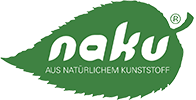
Recycling of PLA/Biopolymers
The 120% sustainable NaKu PLA/bioplastic bottle
Today we are at NGR – Next Generation Recycling. That’s the recycling machine specialist and today we’re going to see how the 120% sustainable NaKu bottle gets that 20% from recycled material. Come with us see the recycling process of PLA/bioplastic!
Video content
We are here at NGR, our recycling specialist and cooperation partner in the 120% sustainable Naku bottle project. Thank you for letting us be here today. Who are you, who is NGR, what do you do? My name is Peter Hierzenberger. I’m in NGR’s lab, analyzing all kinds of plastics. NGR itself builds plastic recycling machines. So there are many different input and output materials to check, the quality before and after the process in our machines. What is so special about the recycling of Naku bottles? Naku bottles are made from PLA, a biopolymer. A lot of scientific work has already been done on PLA, but it hasn’t gotten that far into the industry yet. So it’s still a bit new for us and very exciting for us to examine this material together with NaKu to see how it behaves on our machines, what the quality is like before and after processing and what’s out of ours recycled pellets can be made.
For our 120 percent sustainable NaKu bottle, we have two options for recycling. We have physical recycling or chemical recycling. Here you can see the physical recycling. Physical recycling means that we take the bottles, clean them, shred them into pieces, into flakes. Then the flakes are melted back into pellets and we can use the pellets to make our new bottles. The second option would be chemical recycling. In chemical recycling, we take the bottle material, we break it down into the chemical components that make it up, we repolymerize it and then we have new raw material to make our bottles. NaKu’s vision is not just to have 120 percent, we want to have two hundred percent. One hundred percent renewable and one hundred percent recycled.
Here we are at our recycling machine. It has a capacity of about half a tonne per hour and here we see the renewable NaKu bottle being recycled. First it goes up the conveyor to the shredder where it falls into the shredder. Then it is crushed into flakes and the flakes fall into the extruder where they are heated and melted.
Here in this housing we have the extruder and inside the extruder is now the melted bottle material. We have two stations to ensure there are no other substances in the bottle material. The first is the vacuum where we have filtered out all liquid substances and then the melt goes on to this filter and this filter removes all unmelted particles. We have the filter here. Now the material has passed all the purification steps and comes out here. Normally we can’t see this when the machine is running because it’s separated now, but in the running process the two parts are closed. The hot clean melt comes out here, it’s cut. We have water in the housing and the water pushes the pellets out here. Here they are separated by centrifugation, in the process the water and pellets are separated and this is where the bioplastic pellets come out. We now have 100% recycled PLA material. Here comes the XNUMX% recycled PLA NaKu bottle material, ready to become a new bioplastic NaKu bottle.
